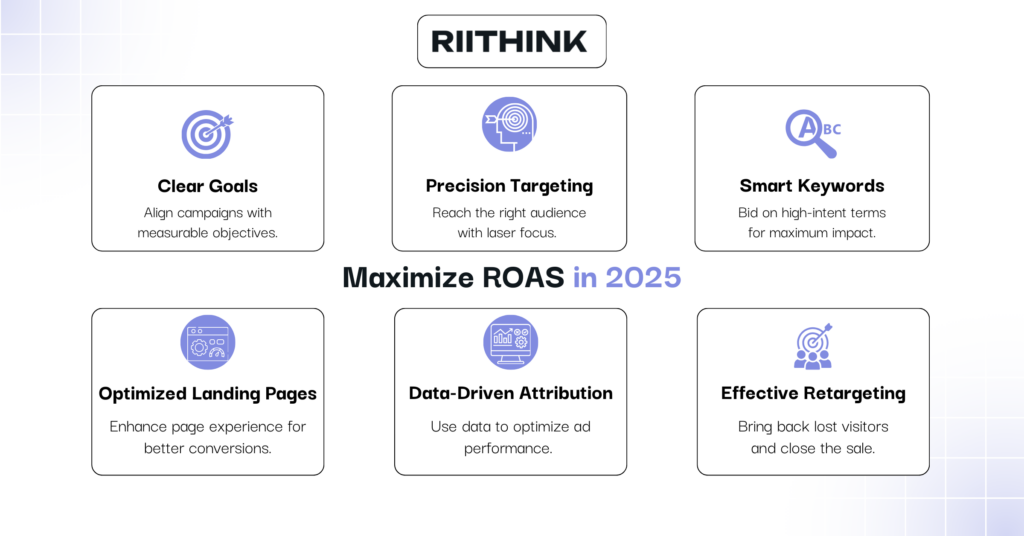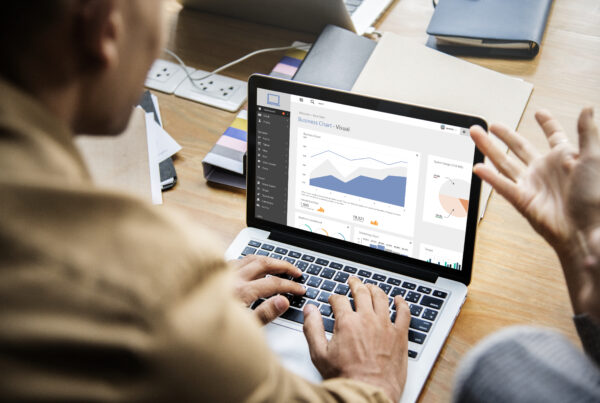In 2025, the digital ad landscape is more competitive than ever. With costs rising and user behavior evolving, simply launching a campaign isn’t enough. To stay ahead, brands need to optimize paid ad campaigns with precision and intent.
Whether you’re managing campaigns in-house or partnering with a digital marketing agency in the USA, focusing on return on ad spend (ROAS) has become the most critical metric. It’s not just about clicks it’s about profitability, scale, and long-term results.
In this guide, we’ll break down what it takes to maximize ROAS in 2025, no matter the platform. From targeting tweaks to creative choices, you’ll learn how to make your paid ads work harder and convert smarter.
Why ROAS Still Rules in 2025
ROAS return on ad spend tells you how much revenue you earn for every dollar you spend on ads. It’s a direct line to business impact, especially in economic environments where budgets are tight and expectations are high.
Here’s why ROAS continues to dominate:
- It aligns with revenue goals, not vanity metrics.
- It reveals platform performance across channels.
- It empowers smarter scaling by spotlighting what actually works.
In short, if you’re not optimizing for ROAS, you’re likely overspending.
Understanding ROAS Across Ad Platforms
Not all platforms measure ROAS the same way. Let’s look at how major platforms define and calculate this key metric:
Google Ads ROAS Strategies
- Focuses on conversion value ÷ cost.
- Smart Bidding strategies like Target ROAS automate optimization.
- High intent means tighter alignment with sales goals.
Meta Ads (Facebook/Instagram)
- Measures revenue attributed to views or clicks.
- Attribution windows matter use 1-day or 7-day click for better clarity.
- Dynamic Product Ads and Advantage+ Campaigns help retarget and upsell.
LinkedIn & B2B Platforms
- Longer sales cycles = more assisted conversions.
- Use lead scoring and offline conversion tracking for accurate ROAS insights.
Each platform brings different intent, cost, and attribution logic. Understanding these nuances is the foundation of a strong paid advertising strategy.
Key Strategies to Optimize Paid Ad Campaigns

Let’s break down how to actually boost ROAS no fluff, just action.
1. Define Clear Campaign Objectives
ROAS can only be optimized when your objective is aligned. Choose the right campaign type:
- Sales or Conversions: Best for eCommerce and direct response.
- Lead Generation: Works well for service-based businesses.
- Traffic or Engagement: Supporting roles, not primary ROAS drivers.
2. Target Smarter, Not Broader
Broad targeting burns budget. In 2025, precision is power.
Tactics to refine targeting:
- Use first-party data from your CRM or email list.
- Build lookalike audiences from high-value customers.
- Leverage retargeting with segmented creative based on behavior.
These tactics help you spend where conversion likelihood is highest.
3. Prioritize High-Intent Keywords
Especially in Google Ads, not all keywords are created equal.
Here’s how to focus:
- Use phrase match and exact match for tighter control.
- Bid on long-tail keywords with clear purchase intent.
- Exclude low-converting search terms regularly via negative keyword lists.
Want help with keyword audits? Partnering with a USA PPC management services team like Riithink can ensure you’re only bidding where ROI exists.
Creative That Converts
Your ad creative isn’t just eye candy it’s a conversion tool. In fact, creative quality is often the hidden lever behind ROAS gains.
4. Match Creative to Funnel Stage
- Top of Funnel: Use attention-grabbing headlines, value-based messaging, or storytelling.
- Middle of Funnel: Address objections, highlight testimonials, or explain features.
- Bottom of Funnel: Focus on urgency, pricing, and clear CTAs.
5. Test Multiple Formats
Platforms now reward native, platform-specific formats.
Try:
- Video shorts for Instagram and TikTok.
- Responsive search ads on Google.
- Image carousels for Facebook and LinkedIn.
Multivariate testing can help you find the highest-performing mix without guessing.
Landing Page Optimization = ROAS Multiplier
Your ads are only as effective as the page they drive to. A click that doesn’t convert is wasted spend.
6. Align Ad Messaging with Landing Pages
- Mirror headline and CTA for consistency.
- Reinforce value prop in the first scroll.
- Use trust signals like reviews, certifications, and return policies.
7. Speed and Mobile Matter
- Mobile-first design isn’t optional it’s expected.
- Compress images, minimize redirects, and streamline code to boost page load time.
- Use tools like Google PageSpeed Insights and GTmetrix to audit performance.
ROAS Optimization Tips Most Advertisers Overlook
You’ve got the basics now here are some often-missed tactics that unlock bigger gains:
8. Use Data-Driven Attribution Models
Last-click attribution is outdated. Explore:
- Data-driven attribution in Google Ads.
- Multi-touch reporting using Google Analytics 4.
- UTM tagging for better campaign source clarity.
9. Monitor ROAS by Audience Segment
One-size-fits-all campaigns underperform. Break down ROAS by:
- Age and gender
- Device type
- Geographic region
- Ad placement
Kill underperformers, scale winners.
10. Automate Where It Helps (Not Everywhere)
Smart Bidding and AI tools are useful but only when inputs are strong. Use automation to:
- Pause low-performing ads
- Rotate creatives based on engagement
- Adjust bids based on time of day
But keep human oversight for strategy and creative direction.
Paid Ads for Small Business: What Works
Small businesses don’t need big budgets they need smart execution. Here’s how to stay lean and effective:
- Use tight geo-targeting to eliminate waste.
- Set realistic daily caps on campaigns.
- Run short, focused campaigns tied to sales events or local demand.
- Track every conversion using tools like Google Tag Manager and Meta Pixel.
If you’re looking to hire a digital marketing company in the USA, prioritize those that understand lean, performance-driven campaigns built for small teams.
Maximize ROAS 2025: Platform-Specific Tactics
Let’s go deeper with specific moves per platform:
Google Ads ROAS Strategies
- Use Value-Based Bidding for Smart Shopping campaigns.
- Exclude low-performing placements in Display.
- Optimize ad extensions sitelinks, callouts, and structured snippets improve clickthrough rates.
Meta (Facebook & Instagram)
- Build Advantage+ Shopping campaigns for automated testing.
- Sync your product catalog for Dynamic Ads.
- Use lead form ads for quick, mobile-friendly conversion.
- Use Lead Gen Forms to collect data directly.
- Narrow down targeting to job title, industry, and company size.
- Test Sponsored InMail for direct outreach.
Track, Report, Improve: Building a Feedback Loop
ROAS isn’t static it’s a number you chase and elevate over time.
11. Set Weekly and Monthly Review Cadence
- Weekly = optimize what’s underperforming.
- Monthly = reallocate budget, expand audiences, test new hooks.
12. Build Dashboards That Show What Matters
Track:
- Cost per acquisition (CPA)
- ROAS by campaign and ad group
- Quality Score (for Google Ads)
- Ad frequency (watch for fatigue)
Use tools like:
- Google Ads Reports
- Meta Ads Manager
- Looker Studio or Supermetrics for visual dashboards
Final Thoughts: Paid Ads Only Work When They’re Optimized
In 2025, every ad dollar needs to stretch further. From targeting to creative, from bidding to attribution, the brands that optimize paid ad campaigns the right way are the ones who win.
Looking to elevate your performance? Riithink, a leading PPC agency in the USA delivers data-driven, ROI-obsessed campaigns tailored to your brand goals.
If you’re serious about scale, it’s time to maximize ROAS the smart way. Let’s get to work.








